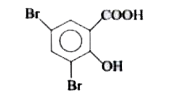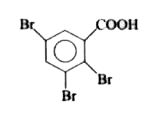Why MgO exist as Mg2+O2− not as Mg⊕Oɵ whereas the formation of Mg2+ from Mg requires more energy than formation of Mg⊕ and formation of Oɵ from O is exothermic whereas the formation of O2− is endothermic .
To understand why MgO exists as Mg²⁺O²⁻ rather than Mg⁺O⁻, we need to analyze the energy changes involved in the formation of these ions and the stability of the resulting ionic compound. Here's a step-by-step breakdown:
Step 1: Ion Formation of Magnesium
- Formation of Mg²⁺ from Mg:
- Magnesium (Mg) has the electronic configuration of (Ne)3s². To form Mg²⁺, two electrons must be removed, resulting in the configuration (Ne), which is stable.
- The first ionization energy (IE₁) is the energy required to remove the first electron, and the second ionization energy (IE₂) is the energy required to remove the second electron.
- Although IE₂ is higher than IE₁, the formation of Mg²⁺ is favorable because it achieves a noble gas configuration.
Step 2: Ion Formation of Oxygen
- Formation of O²⁻ from O:
- Oxygen (O) has the electronic configuration of (He)2s²2p⁴. To achieve a stable octet, it needs to gain two electrons, forming O²⁻ with the configuration (Ne).
- The first electron gain (to form O⁻) is exothermic, meaning energy is released. However, gaining a second electron (to form O²⁻) is endothermic due to electron-electron repulsion.
Step 3: Comparison of Ion Charges
- Stability of Ions:
- The formation of Mg²⁺ and O²⁻ results in ions with higher charges compared to Mg⁺ and O⁻. The higher the charge, the stronger the electrostatic attraction between the ions in the ionic compound.
- The lattice energy of an ionic compound is directly proportional to the product of the charges of the ions and inversely proportional to the distance between them. Thus, Mg²⁺ and O²⁻ will have a much higher lattice energy than Mg⁺ and O⁻.
Step 4: Lattice Energy Consideration
- Lattice Energy:
- The lattice energy for MgO (with Mg²⁺ and O²⁻) is significantly higher than that for a hypothetical MgO with Mg⁺ and O⁻. This high lattice energy contributes to the stability of the compound.
- The stability provided by the high lattice energy of MgO outweighs the energy costs associated with the formation of Mg²⁺ and O²⁻.
Conclusion
- Therefore, MgO exists as Mg²⁺O²⁻ rather than Mg⁺O⁻ because the formation of Mg²⁺ and O²⁻ leads to a more stable ionic compound due to the higher lattice energy resulting from the greater charges on the ions.
- Formation of Mg²⁺ from Mg:
- Magnesium (Mg) has the electronic configuration of (Ne)3s². To form Mg²⁺, two electrons must be removed, resulting in the configuration (Ne), which is stable.
- The first ionization energy (IE₁) is the energy required to remove the first electron, and the second ionization energy (IE₂) is the energy required to remove the second electron.
- Although IE₂ is higher than IE₁, the formation of Mg²⁺ is favorable because it achieves a noble gas configuration.
- Formation of O²⁻ from O:
- Oxygen (O) has the electronic configuration of (He)2s²2p⁴. To achieve a stable octet, it needs to gain two electrons, forming O²⁻ with the configuration (Ne).
- The first electron gain (to form O⁻) is exothermic, meaning energy is released. However, gaining a second electron (to form O²⁻) is endothermic due to electron-electron repulsion.
- Stability of Ions:
- The formation of Mg²⁺ and O²⁻ results in ions with higher charges compared to Mg⁺ and O⁻. The higher the charge, the stronger the electrostatic attraction between the ions in the ionic compound.
- The lattice energy of an ionic compound is directly proportional to the product of the charges of the ions and inversely proportional to the distance between them. Thus, Mg²⁺ and O²⁻ will have a much higher lattice energy than Mg⁺ and O⁻.
- Lattice Energy:
- The lattice energy for MgO (with Mg²⁺ and O²⁻) is significantly higher than that for a hypothetical MgO with Mg⁺ and O⁻. This high lattice energy contributes to the stability of the compound.
- The stability provided by the high lattice energy of MgO outweighs the energy costs associated with the formation of Mg²⁺ and O²⁻.
- Therefore, MgO exists as Mg²⁺O²⁻ rather than Mg⁺O⁻ because the formation of Mg²⁺ and O²⁻ leads to a more stable ionic compound due to the higher lattice energy resulting from the greater charges on the ions.
Topper's Solved these Questions
- PERIODIC CLASSIFICATION OF ELEMENTS AND GENERAL INORGANIC CHEMISTRYBOOK - CENGAGE CHEMISTRY ENGLISHCHAPTER - PERIODIC CLASSIFICATION OF ELEMENTS AND GENERAL INORGANIC CHEMISTRYEXERCISE - Ex 1.3 (Objective)
8 Videos
- PERIODIC CLASSIFICATION OF ELEMENTS AND GENERAL INORGANIC CHEMISTRYBOOK - CENGAGE CHEMISTRY ENGLISHCHAPTER - PERIODIC CLASSIFICATION OF ELEMENTS AND GENERAL INORGANIC CHEMISTRYEXERCISE - Ex 1.3 (Multiple Correct)
5 Videos
- PERIODIC CLASSIFICATION OF ELEMENTS AND GENERAL INORGANIC CHEMISTRYBOOK - CENGAGE CHEMISTRY ENGLISHCHAPTER - PERIODIC CLASSIFICATION OF ELEMENTS AND GENERAL INORGANIC CHEMISTRYEXERCISE - Ex 1.2(Objective)
22 Videos
- P-BLOCK GROUP 14 - CARBON FAMILYBOOK - CENGAGE CHEMISTRY ENGLISHCHAPTER - P-BLOCK GROUP 14 - CARBON FAMILYEXERCISE - Exercises Archives (Subjective)
9 Videos
- PURIFICATION OF ORGANIC COMPOUNDS AND QUALITATIVE AND QUANTITATIVE ANALYSISBOOK - CENGAGE CHEMISTRY ENGLISHCHAPTER - PURIFICATION OF ORGANIC COMPOUNDS AND QUALITATIVE AND QUANTITATIVE ANALYSISEXERCISE - Assertion Reasoning Type
5 Videos
Similar Questions
Knowledge Check
The action of Br2/H2O on salicylic acid results in the formation of :
A B
B C
C D
D
The formation of water from H2(g) and O2(g) is an exothermic process because :
View SolutionThe heat of formation of H2O(l) is −68.0 kcal, the heat of formation of H2O(g) can logically be
View SolutionWhy does magnesium from Mg2+ and not Mg+?
View SolutionAssertion: Formation of Cl− ion is exothermic wheres O2− ion formation is endothermic.
Reason: EA2 of oxygen is endothermic and greater than its exothermic EA1 value of oxygen.
View SolutionAssertion: Formation of Cl− ion is exothermic wheres O2− ion formation is endothermic.
Reason: EA2 of oxygen is endothermic and greater than its exothermic EA1 value of oxygen.
View SolutionThe formation of O+2[PtF6]− is the basis for the formation of xenon fluorides. This is because:
View SolutionBalance the equation: Mg+O2→MgO
View Solution
